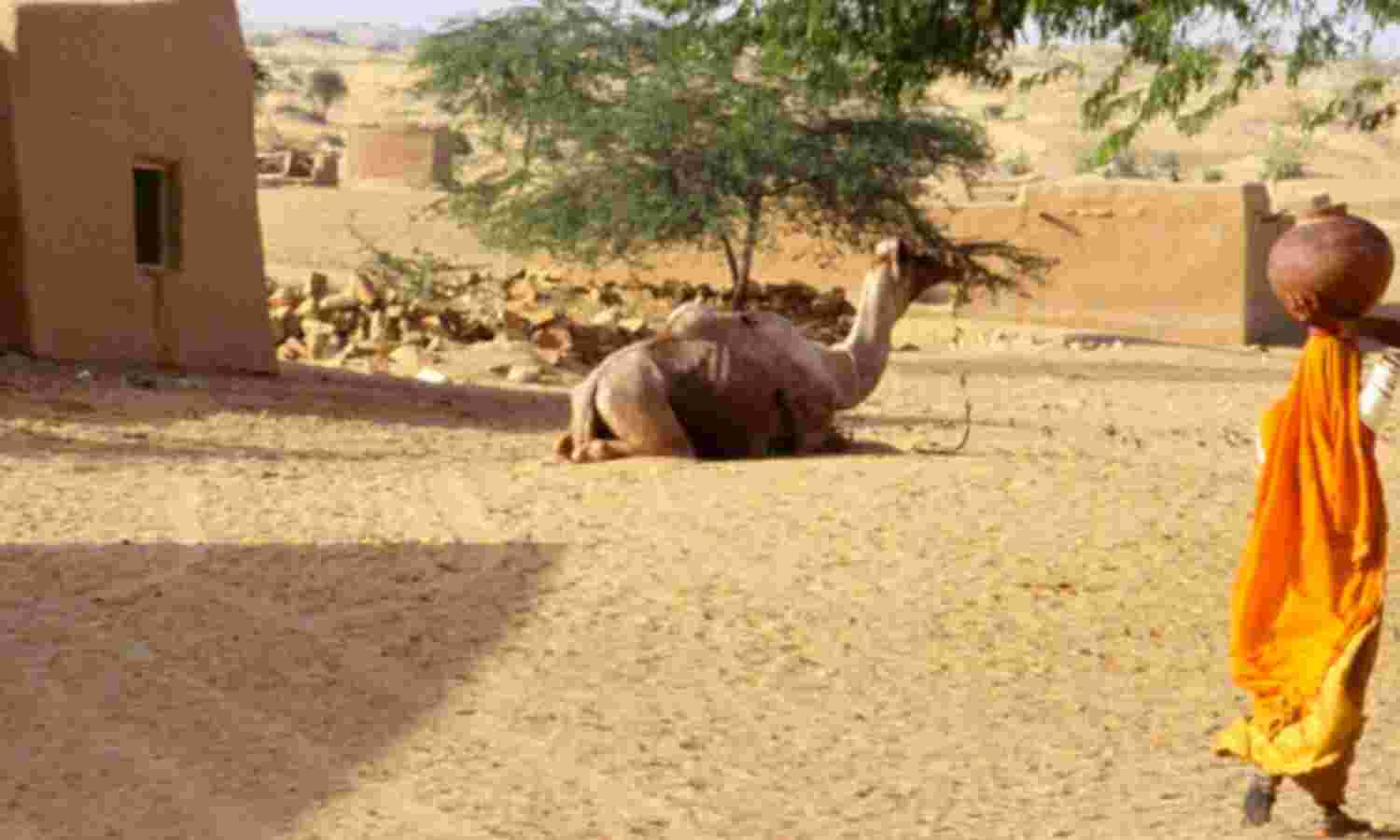India’s Rural Have-Nots: Unconnected, Without Drinking Water, Low Reading Ability

Mumbai: Up to 23 million households (in over 292,000 villages) without electricity; 7% (43,000) villages without mobile services; 17% rural habitations without clean drinking water; 25% of 14- to 18-year-olds (nearly 88 million) in rural areas cannot read basic text in own language.
These data reflect those left out of India’s growth story in the country’s rural areas, home to 833 million or 69% of the population, according to various data sets analysed by IndiaSpend.
As India’s economy grew seven-fold over 25 years to Rs 121.9 lakh crore ($1.8 trillion) in 2016-17, moving to the world’s fifth largest over this period, per capita income increased more than four times--from Rs 15,766 to Rs 82,269--during the same period.
Of 640,932 villages in India (597,608 inhabited and 43,324 uninhabited), all inhabited villages have been electrified--according to the government, although this is unverified--but over 23 million households in rural areas are without electricity.
Of more than 219 million rural households, 195 million, or 89%, have been electrified, official data show.
Of 23 million rural households to be electrified, Uttar Pradesh leads the list with over 12 million households, followed by Assam (1.9 million) and Odisha (1.8 million), as on August 22, 2018.
As many as 18,374 Indian villages got electricity over three years to 2018, but in no more than 8%, or 1,425 villages, do all households have electricity, according to the government’s GARV dashboard.
The first mobile phone call in India was made in 1995; now, 23 years later, 43,000-odd inhabited villages do not have mobiles services as on July 27, 2018, according to government data. Odisha has the most villages (9,940) without mobile services, followed by Maharashtra (6,117) and Madhya Pradesh (5,558).
While mobile phone ownership is increasing, many rural inhabitants still struggle to access electricity for simple daily tasks--such as charging a phone--IndiaSpend reported on May 17, 2018.
Of 1.7 million rural habitations, over 289,000 habitations, or nearly 17%, have only partial access to clean drinking water (getting at least 40 litre per capita per day), according to an August 8, 2018 reply to the Lok Sabha (lower house of Parliament): and 62,582 habitations have water that is “quality affected” or contaminated.
Rural road building picking pace
Of 178,184 eligible habitations to be covered under the Pradhan Mantri Gram Sadak Yojana (PMGSY, or the Prime Minister’s Rural Roads Programme), started in 2000 to ensure all-weather roads across villages, 31,022 or 17% habitations are yet to be connected, according to this reply to the Lok Sabha on March 22, 2018.
Rural road building increased from 24,161 km in 2012-13 to 47,447 km in 2016-17, rural development ministry data show.
Over 626,377 km rural roads have been built till March 31, 2016, under PMGSY since the launch, according to data from the road transport ministry.
Houses being built
Of a target of building over 9.9 million houses in villages being implemented under the Pradhan Mantri Awas Yojana (Gramin) (Prime Minister’s Rural Housing Programme), only 4.5 million or 45% have been completed, rural ministry data show.
While 10.76 million beneficiaries have been registered under the scheme, 8.9 million houses have been sanctioned.
Healthcare still a worry
There is a 19% shortfall in health sub centres, 22% shortfall in primary health centres (PHCs) and 30% shortfall in community health centres (CHCs) at the end of March 2017, according to data from the Rural Health statistics.
While sub centres cover a population of 5,000 people in the rural areas, PHCs cover 30,000 people and CHCs cover 120,000 people.
PHC, the first contact point between the village community and the medical officer, has a shortfall of nearly 46% for health assistants (female) and 60% for health assistants (male). For allopathic doctors, the shortfall was 12%, mainly due to shortfall of doctors at PHCs in Uttar Pradesh (1,412), Chhattisgarh (444) and Odisha (340).
Even as health crises in India grew, National Health Mission (NHM) funds unspent by states over five years to 2016 increased by 29%, according to a recent audit by the government’s auditor, IndiaSpend reported on August 20, 2018.
There is a 24%-38% shortfall in the availability of medical personnel at PHCs, sub centres, and CHCs in 28 states/union territories of India, according to the latest audit by the Comptroller and Auditor General (CAG) of India, IndiaSpend reported on August 21, 2018.
The CAG survey found that 73% sub centres were more than 3 km from the remotest village, 28% were not accessible by public transport and 17% were unhygienic, we reported.
Learning still a concern
About 25% of the 14-18 age group (~88 million) in rural areas still cannot read basic text fluently in their own language, according to the Annual Status of Education Report, 2017 by Pratham, an advocacy.
Over 86% of youth in the 14-18 age group in rural areas are still within the formal education system, either in school or in college, the report said.
In 2017, Pratham, which has been doing the ASER report since 2005, focused on an older age group, youth who are 14 to 18 years old and have moved just beyond the elementary school age.
“Near-universal enrollment and automatic promotion through the elementary stage have resulted in more and more children successfully completing elementary schooling,” the report said.
More than half struggle with division (3 digit by 1 digit) problems. The ability to do division can be thought of as a proxy for the ability to do basic arithmetic operations.
While 53% of all 14-year-olds in the sample could read English sentences, for 18-year-old youth, this figure was closer to 60%.
We welcome feedback. Please write to respond@indiaspend.org. We reserve the right to edit responses for language and grammar.


